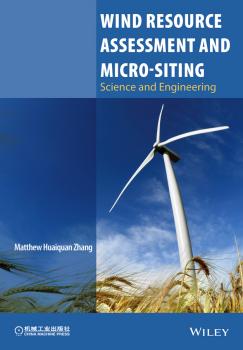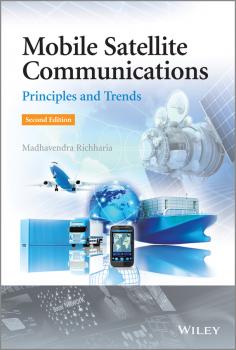Техническая литература
Различные книги в жанре Техническая литератураPolyurethanes. Science, Technology, Markets, and Trends
A complete overview of a key plastic One of the most versatile polymer materials, polyurethanes have a unique chemical nature that allows for shaping and molding to fit all sorts of consumer and industrial products – seat cushions, carpets, insulation, coatings, and refrigerators to name a few. Despite its popular uses, polyurethane science has only relatively recently achieved appreciation for the richness of its expression as a polymer family. This book provides a thorough presentation of polyurethane science, technology markets and trend analysis based on recent patents. Although it does not provide ultimate detail (such as explicit information typically in patents), the book has a flow and continuity that allows readers to find all the background necessary to understand any other more detailed polyurethane information found elsewhere. Anyone involved in the polymer and plastics industry will find this book a key resource with features that include: An in-depth summary of the current state of polyurethane research and knowledge Discussion of the applications, manufacture, and markets for polyurethanes Analytical methods, reaction mechanisms, morphology, theoretical techniques, and the selection of chain extenders Polyurethane flexible and rigid foams, elastomers, coatings, adhesives, and medical applications In-depth coverage of governmental regulations, non-isocyanate/non-phosgene routes to polyurethane structure, and industrial routes to environmental, health, and safety risk mitigation
Wind Resource Assessment and Micro-siting. Science and Engineering
Covers all the key areas of wind resource assessment technologies from an engineer’s perspective Focuses on wind analysis for wind plant siting, design and analysis Addresses all aspects from atmospheric boundary layer characteristics, to wind resource measurement systems, uncertainties in measurements, computations and analyses, to plant performance Covers the basics of atmospheric science through to turbine siting, turbine responses, and to environmental impacts Contents can be used for research purposes as well as a go-to reference guide, written from the perspective of a hands-on engineer Topic is of ongoing major international interest for its economic and environmental benefits
Stahlbau-Kalender 2017. Schwerpunkte - Dauerhaftigkeit, Ingenieurtragwerke
Dauerhaftigkeit ist die Zuverlassigkeit der Werkstoffe und Konstruktionen, wahrend der vorgesehenen Nutzungsdauer gegenuber Einwirkungen widerstandsfahig zu sein. Fur eine ausreichende Dauerhaftigkeit mussen viele Voraussetzungen erfullt sein, die entweder bei Planung und Fertigung eines Neubaus berucksichtigt werden mussen, oder die Unterhaltung und Uberwachung bestehender Tragwerke betreffen. Von besonderer Bedeutung ist die Dauerhaftigkeit fur die Industrietragwerke und die Brucken wegen der hohen Lebensdauern. Der Themenbogen spannt sich deshalb von der Werkstoffwahl uber Fragen der Konstruktion und Ermudung, Prufung und Bewertung im Bestand bis hin zum Korrosionsschutz. Hinsichtlich der Stahlsortenauswahl werden grundsatzliche Hinweise gegeben und die Regelungen in DIN EN 1993 Teil 1-10 erlautert. Mit Korrosionsschutz und Feuerverzinken befassen sich zwei Beitrage. Die richtige Bewertung von Altstahlkonstruktionen kann Ressourcen schonen. Ein klassisches Gebiet des Stahlbaus sind die Ingenieurtragwerke des Industriebaus. Daher befassen sich Beitrage uber Hallentragwerke und Kranbahnen, Schornsteine, Maste und Turme sowie Silos und Tanks mit aktuellen Entwicklungen und dem Stand der Technik. Die Erlauterungen zur neuen EU-BauPVO und dem neuen bauaufsichtlichen Konzept aus erster Hand sind dringend notig, denn es kommen die CE-Kennzeichnung von Bauprodukten sowie Marktuberwachungsbehorden und EU-Kommission anstelle der wohlbekannten Bauregelliste. Der Stahlbau-Kalender ist ein Wegweiser fur die richtige Berechnung und Konstruktion im gesamten Stahlbau, er dokumentiert und kommentiert verlasslich den aktuellen Stand der Stahlbau-Regelwerke. Zur bauaufsichtlichen Einfuhrung von Eurocode 3 werden seit der Ausgabe 2011 systematisch alle Teile der Norm mit ihren Nationalen Anhangen kommentiert.
Bauphysik-Kalender 2016. Schwerpunkt: Bauwerksabdichtung
Preventative fire protection means the overall consideration of constructional, plant and organisational measures taking into account the use-related danger potential and the aims of protection. Current overview and background knowledge about guidelines and practical examples.
Bauphysik-Kalender 2014. Schwerpunkt - Raumakustik und Schallschutz
Sound insulation and room acoustics are quality criteria for buildings. The book includes background information about sound insulation according to E DIN 4109 and VDI 4100. Interior acoustic design and the extension of DIN 18041 are also discussed.
Bauphysik-Kalender 2017. Schwerpunkt - Gebäudehülle und Fassaden
Zukunftsfahige Gebaudehullen werden der Interaktion von Au?enwandkonstruktionen mit der Gebaudetechnik gerecht. Dabei mussen in einem integralen Planungsprozess die verschiedenen Anforderungen berucksichtigt werden, wie z. B. Behaglichkeit der Gebaudenutzer, energetische Effizienzaspekte, okonomische Effizienzaspekte und wartungsarme Lebensdauer, Schutz der Konstruktion gegen klimatische Einwirkungen. Die Entwicklung hin zu Niedrigstenergiegebauden (nZEB – nearly zero-energy buildings) wirkt sich insbesondere auf den Entwurf der Gebaudehullen aus. Ab 2021 sollen gema? EU-Richtlinie uber die Gesamtenergieeffzienz von Gebauden (EPBD) alle Neubauten als Niedrigstenergiegebaude gebaut werden. Gebaude, die von Behorden als Eigentumer gebaut werden, sollen bereits ab Anfang 2019 diesen Standard einhalten. Um diesen zu erreichen, mussen die Gebaude vor allem gut gedammt sein und erneuerbare Energiequellen nutzen. Messtechnische Untersuchungsmethoden und rechnerische Nachweisformate hinsichtlich Warme- und Feuchte- und Schallschutz werden vorgestellt und erlautert. Eine besondere, neue Rolle kommt der Tageslichtnutzung zu. Das Kompendium der Dammstoffe im Bauwesen sowie der aktualisierte Beitrag uber die Berechnung von Warmebrucken sind Planungsgrundlagen fur die tagliche Praxis. Auf aktuellem Stand sind auch in diesem Jahrgang die Materialtechnischen und Brandschutztechnischen Tabellen. Der neue Bauphysik-Kalender 2017 mit dem Schwerpunktthema Gebaudehulle und Fassaden bietet eine solide Arbeitsgrundlage und ein verlassliches aktuelles Nachschlagewerk fur die Planung in Neubau und Bestand. Der Bauphysik-Kalender ist ein Kompendium fur die richtige Umsetzung bauphysikalischer Schutzfunktionen mit Normenuberblick und -kommentierung, Materialdaten, Berechnung und Nachweisfuhrung sowie praxisgerechten konstruktiven Losungen auf den Gebieten Warme- und Feuchteschutz, Schallschutz sowie Brandschutz.
Resistivity Modeling. Propagation, Laterolog and Micro-Pad Analysis
Resistivity logging represents the cornerstone of modern petroleum exploration, providing a quantitative assessment of hydrocarbon bearing potential in newly discovered oilfields. Resistivity is measured using AC coil tools, as well as by focused DC laterolog and micro-pad devices, and later extrapolated, to provide oil saturation estimates related to economic productivity and cash flow. Interpretation and modeling methods, highly lucrative, are shrouded in secrecy by oil service companies – often these models are incorrect and mistakes perpetuate themselves over time. This book develops math modeling methods for layered, anisotropic media, providing algorithms, validations and numerous examples. New electric current tracing tools are also constructed which show how well (or poorly) DC tools probe intended anisotropic formations at different dip angles. The approaches discussed provide readers with new insights into the limitations of conventional tools and methods, and offer practical and rigorous solutions to several classes of problems explored in the book. Traditionally, Archie’s law is used to relate resistivity to water saturation, but only on small core-sample spatial scales. The second half of this book introduces methods to calculate field-wide water saturations using modern Darcy flow approaches, and then, via Archie’s law, develops field-wide resistivity distributions which may vary with time. How large-scale resistivity distributions can be used in more accurate tool interpretation and reservoir characterization is considered at length. The book also develops new methods in “time lapse logging,” where timewise changes to resistivity response (arising from fluid movements) can be used to predict rock and fluid flow properties.
Lignocellulosic Polymer Composites. Processing, Characterization, and Properties
The book presents emerging economic and environmentally friendly lignocellulosic polymer composites materials that are free from side effects studied in the traditional synthetic materials. This book brings together panels of highly-accomplished leading experts in the field of lignocellulosic polymers & composites from academia, government, as well as research institutions across the globe and encompasses basic studies including preparation, characterization, properties and theory of polymers along with applications addressing new emerging topics of novel issues. Provide basic information and clear understanding of the present state and the growing utility of lignocellulosic materials from different natural resources Includes contributions from world-renowned experts on lignocellulosic polymer composites and discusses the combination of different kinds of lignocellulosic materials from natural resources Discusses the fundamental properties and applications of lignocellulosic polymers in comparison to traditional synthetic materials Explores various processing/ mechanical/ physic-chemical aspects of lignocellulosic polymer composites
Polymer Morphology. Principles, Characterization, and Processing
With a focus on structure-property relationships, this book describes how polymer morphology affects properties and how scientists can modify them. The book covers structure development, theory, simulation, and processing; and discusses a broad range of techniques and methods. • Provides an up-to-date, comprehensive introduction to the principles and practices of polymer morphology • Illustrates major structure types, such as semicrystalline morphology, surface-induced polymer crystallization, phase separation, self-assembly, deformation, and surface topography • Covers a variety of polymers, such as homopolymers, block copolymers, polymer thin films, polymer blends, and polymer nanocomposites • Discusses a broad range of advanced and novel techniques and methods, like x-ray diffraction, thermal analysis, and electron microscopy and their applications in the morphology of polymer materials
Mobile Satellite Communications. Principles and Trends
Demand for Mobile Satellite Service (MSS) is on the increase, with a huge surge of interest in mobile communications in recent years and high-paced advancements in the supporting system architectures, devices and applications. This thoroughly revised and updated book provides a comprehensive guide to the MSS technologies and emerging trends. It takes a system level approach, giving in-depth treatment of technical and business related issues. The author, a leading professional in the area, draws on his extensive experience in industry and research, to provide the reader with a sound and informed understanding of the technology. Mobile Satellite Communications includes introductory material for the reader new to the field, in addition to exploring prevalent system concepts, architecture, practices and trends for the more experienced. An in-depth review of scientific principles merged with business models and regulatory considerations presents a balanced perspective of commercial mobile satellite systems. This book will be of interest to practicing engineers in mobile satellite communications and mobile broadcasting, research and development professionals working in these areas, mobile satellite service providers and operators. Academics and students studying satellite systems/technology, specialists in other classes of satellite systems, technical and marketing managers, strategists and planners of telecommunication systems: individuals interested in mobile communications, satellite and telecommunications/broadcasting technology will also find this book insightful. Key Features: Comprehensive treatment of mobile satellite communications topics, including radio link aspects, satellite constellations, architectural and operational aspects, as well as business planning models, MSS radio interface standards, spectrum forecast methodologies and system examples. Addresses related themes such as mobile broadcasting, mobile VSATs, search and rescue, and navigation systems. Introduces emerging technologies such as mobile broadband, television broadcasting to handheld units, advanced capacity enhancement techniques, hybrid system architecture concepts, including a rich sample of research topics such as multiple input multiple output, satellite-based ad-hoc networks, and highlights initiatives in the use of Q/V frequency bands. Includes revision questions at the end of each chapter. An accompanying website for interaction (www.satellitesandyou.com).









